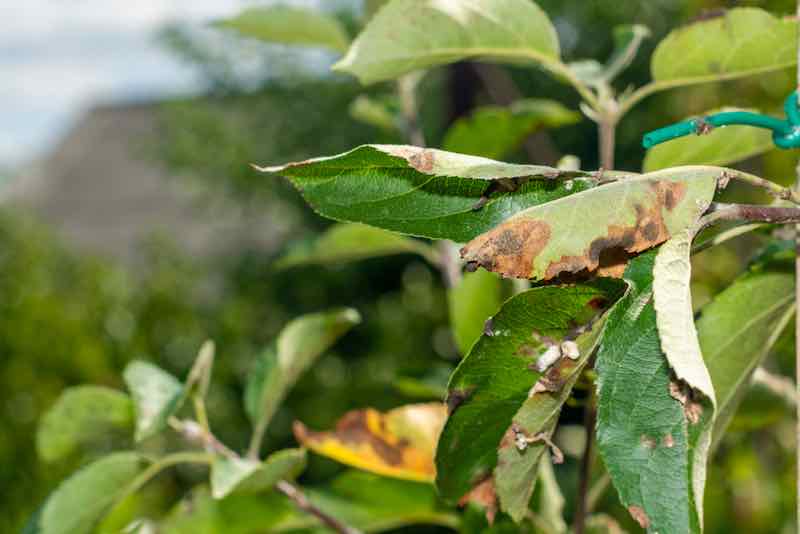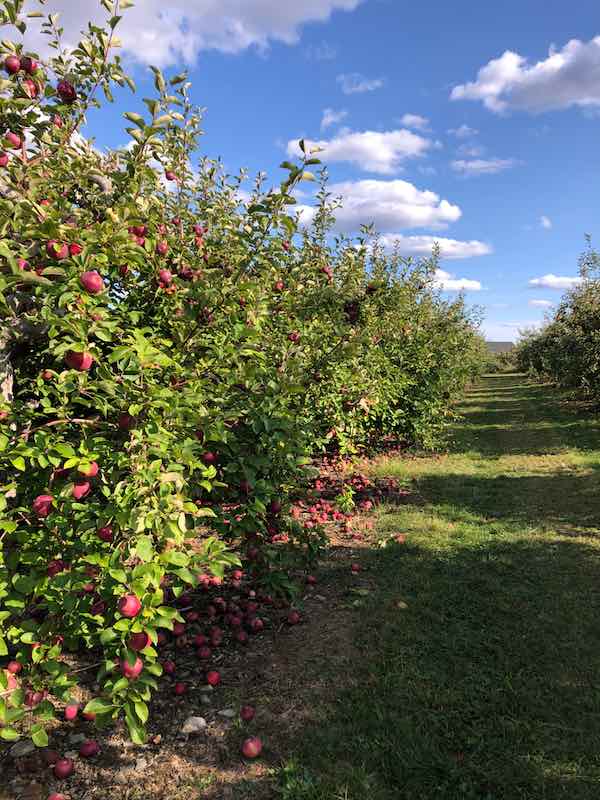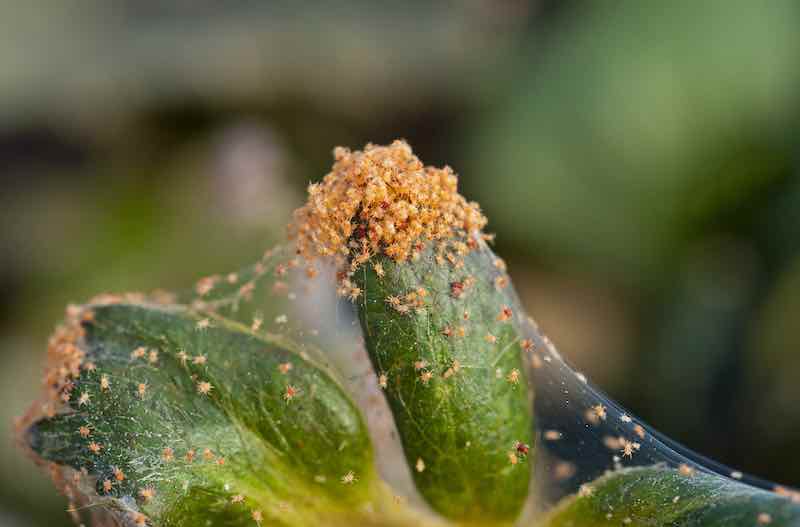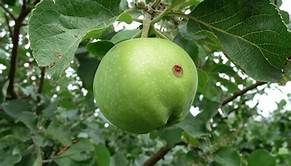Table of Contents
When To Spray Apple Trees
Spraying your apple trees is all about timing. Determining a spray schedule is based on your plant’s life cycle, which is zone you are in, and micro climate dependent. When you are prepared with a spraying plan and ready for action, you can keep you home orchard free of pests and diseases. You will enjoy a bumper crop and harvesting will be a pleasure.

Organic Vs Non-Organic
Traditional non-organic insect pests and disease control uses toxic chemicals to keep fruits pretty and marketable.
Organic measures of insect pests and disease control may require a more hands-on approach, however the outcome is healthier fruits that may not be pretty and shiny. Garden centers are carrying more organic pesticides, fungicides, and herbicides than ever before. It is much easier to keep our gardens pest free and stay organic too.
Types Of Fruit Tree Sprays
It is always a good idea to avoid any type of spraying while the flowers are open. During the blossom stage, your plants are in the pollination process and spraying can adversely affect bees and other pollinators.
Dormant Sprays or dormant oils are a horticultural oil sprayed on the tree trunk and limbs during your apple trees dormant cycle. The horticultural oil kills insects wintering in the bark of your apple trees. It is good for killing scale insects, mite eggs, and aphid eggs. Typically, this only requires one application.
Insecticidal Sprays kill foliage feeding insects, borers, and fruit eaters. This can be required multiple times during the growing cycles depending on the insect infestation.
Fungicidal Sprays keep the spread of fungus and bacteria in check. Fungicidal spraying can be required multiple times over the growing season depending on the frequency of protection needed.
General Purpose Sprays are used as an all-in-one control against common insects and diseases. General purpose spray can be used as needed, however it contains both insecticide and fungicide when both may or may not be required. This broad spectrum spray can be effective particularly if you do not have a good knowledge of exactly what is adversely affecting your fruit tree.
Spray Schedule
Your spray schedule is dependent on your apple tree’s growth schedule and what insect pest or disease you are trying to control by spraying.
Your plant has life cycles or growth schedule: dormancy, pre-blossom, blossom, petal fall, and fruit formation. Spraying is timed to the specific stage and outcome desired.
Below is a general spraying schedule, you should assess your trees and growth cycles to determine the series of sprays required and apply accordingly.
Keep an eye on the weather when getting close to your final spray date. Some applications require rain while others require a drying period.
Winter – November Through February
Winter is the time for a good pruning, removal of garden debris, and spraying with dormant oil.
Spring – March And April
Spring is coming and so are the pesky little critters that ruin your crop. Now is the time to spray for aphids, mites, and scab, along with mildew and fire blight.
Summer – May Through September
Early summer is time to distributed codling moth traps throughout the orchard, just when the trees are starting to bloom.
Fall – September And October
Fall is the time to spray for mites if they and other microscopic critters that are a problem in your area.
Plant Life Cycles
Dormancy is the time during the winter before the buds begin to swell.
Pre-blossom is divided into five sub-stages: silver buds, green tips, half-inch green, tight cluster, and pink flower buds.
Blossom stage lasts from the time the flower opens until the petals have dropped.
Petal Fall follows the blossom stage and runs until the first baby fruits begin to develop.
Fruit Formation is the final stage and lasts until harvest.
Diseases
Fire Blight

Fire blight is named for the scorched leaves running down a branch. It is a bacterial disease that attacks the tip of the branch then travels toward the trunk destroying everything in its path. Removing the infected branches and applying Fire Blight Spray will help get this under control.
Powdery Mildew
Powdery Mildew can be a constant issue, it attacks at any stage in your apple trees life. Dormant oil will help along with a Copper Fungicide.
Scab


Subscribe to Minnetonka Orchards!
Get updates on the latest posts and more from Minnetonka Orchards straight to your inbox.SUBSCRIBEBy subscribing, I consent to receiving emails.
Scab infected leaves have an olive green or brown lesions. It is caused by a fungus that infects both the leaves and fruit, often making the fruit inedible. Many apple trees are disease resistant to scab, something to consider when making your apple tree purchase. A good fungicide spray that is approved for use on fruit trees is the best method of preventing this disease.
Pests
Spider Mites

Spider mites damage the leaves of your apple tree. They produce large webs to shelter their eggs from the weather. There is not a lot you can do to prevent spider mites. They tend to attack weaker trees, so keeping your fruit tree healthy is the first step in prevention.
Codling Moth

Codling moths lay their eggs on the young developing fruit in early spring. It only takes a few days for the eggs to hatch and the larvae to bore their way into your fruit causing all kinds of destruction. Use a codling moth trap for non spray approach or Bonide Insecticide/Pesticide brew for spraying.
Tent Caterpillars

These leaf crunching little buggers will defoliate your tree in the early spring. In the process they harm your trees ability to produce energy. Spraying is the best method for reducing their numbers. Use Bonide Insecticide/Pesticide to help keep caterpillars in check.
Apple Maggot
These pesky flies begin to appear in June and lay their eggs on young fruit. When the larvae hatch, they burrow their way into your beautiful fruit. The best treatment for apple maggots to use apple maggot fly traps near your trees fruit clusters after flower petal fall.
Aphids

Aphids are one of the most common apple tree pests. Ants love the sticky residue exuded by the aphids and add to the infestation problem. Bonide All Seasons Dormant Spray Oil and Insecticide Concentrate will help your rid your aphid population.
Scale Insects

Scale insects attach the woody branches of your fruit tree, and occasionally will attach fruit too. A close relative of aphids, scale control requires a similar protocol.
Other Disease Prevention For Fruit Trees
Pruning your apple trees during the winter helps keep your trees healthy and strong. Removing dead and diseased branches, cutting cross branches, water sprouts, and root suckers will funnel your trees energy to the healthy limbs. Be sure to clean your pruners with rubbing alcohol or bleach between trees so as not to carry a disease from one tree to another.
Removing all debris from under the tree is good practice for preventing disease and pest infestations. Dead leaves, rotting fruit, and other garden debris is a wonderful breeding ground for insects and unwanted fungi. Do not add this to your compost you will keep infesting your own crops!
Personal Protection

Keep yourself protected while you spraying apple trees. Wear appropriate protective clothing, mask, goggles, and gloves for safety. Make sure children, pets, and livestock are clear of the area before spraying insecticides and fungicides.
Always follow the manufacturer’s instructions on the product label when using any spraying product. Preparing a batch of spray mixture stronger than suggested does not mean you will get faster results. You may just end up causing more harm than good.
Take care to keep all insect pests and disease prevention products safely stored away from children and pets.
Keep In Touch
We hope you found a solution to your fruit tree disease or pest problems. Be sure to bookmark our website, so you can visit often. We are delighted to bring you all the up-to-date information on your fruit orchard gardening needs. Many of these techniques can be used on your pear trees too.
Two other informative posts you might be interested in are How To Plant Apple Trees which will help you get your trees off to a great start. Also, Pruning Apple Trees: The Home Grower’s Complete Guide which will help you keep your trees healthy, fruitful, and shapely.
Harvesting your apple trees is your reward for all your gardening work. Planning a spraying schedule will help keep your trees healthy and productive.

